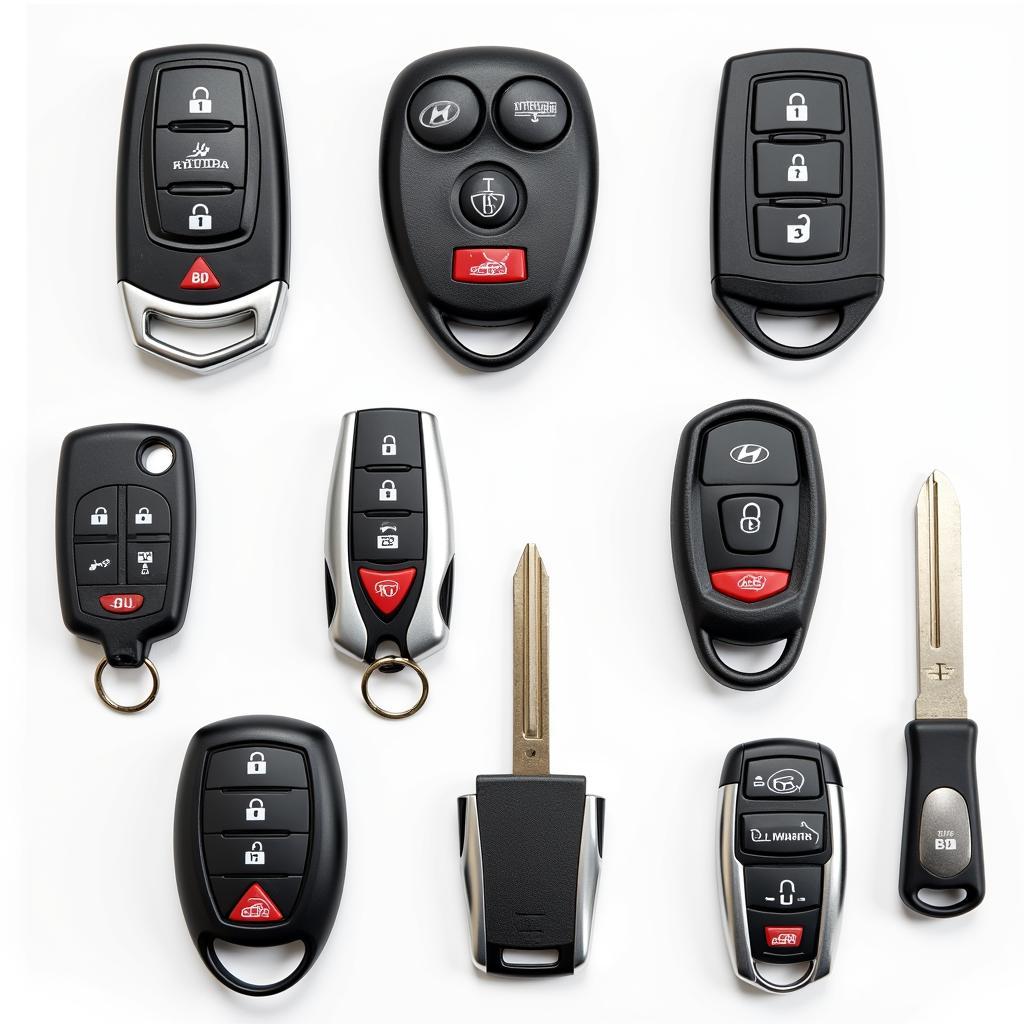In today’s world, car theft is an unfortunate reality. That’s why modern vehicles come equipped with sophisticated anti-theft devices to deter potential thieves. But how do these systems actually work to protect your car?
Understanding the Basics of Car Anti-theft Systems
Anti-theft devices function as a complex network of electronic and mechanical components working in sync to prevent unauthorized access and engine start-up. Let’s break down the process:
1. Locking Mechanisms: At the most basic level, your car doors and trunk utilize physical locks that can only be operated with a designated key or key fob.
2. Immobilization Systems: Beyond physical locks, modern cars employ electronic immobilizers. These systems typically consist of a transponder chip embedded in your car key and a receiver within the vehicle. When you insert your key or have your key fob nearby, the transponder and receiver communicate, allowing your car to start.
3. Alarm Systems: Many vehicles are equipped with alarm systems that activate when they detect a forced entry attempt, such as breaking a window or tampering with the ignition. These alarms often include loud sirens, flashing lights, and notifications sent to your key fob.
Common Types of Anti-theft Devices
Let’s delve deeper into some of the most prevalent types of anti-theft devices you’ll find in vehicles today:
1. Remote Keyless Entry: This system allows you to lock, unlock, and even start your car remotely using a key fob. It utilizes radio waves to communicate with your vehicle.
2. Car Alarms with Sensors: These advanced systems go beyond basic alarms by incorporating sensors that detect various threats. They can include:
* **Shock Sensors:** Detect impacts or attempts to shake the vehicle.
* **Motion Sensors:** Triggered by movement inside the car.
* **Tilt Sensors:** Sound the alarm if the car's angle changes significantly, such as during towing.
* **Glass Break Sensors:** Listen for the distinct sound of breaking glass.3. GPS Tracking Systems: For the ultimate layer of protection, some vehicles are equipped with GPS tracking systems. In the event of theft, these systems allow authorities to locate and recover your vehicle.
4. Immobilizers: As mentioned earlier, immobilizers prevent the engine from starting without the presence of the correct transponder chip in the key. This technology has become a standard feature in most modern cars.
 car immobilizer system
car immobilizer system
Common Issues and Troubleshooting
While these systems are designed to provide robust security, you may encounter some common issues:
- Key Fob Malfunctions: Dead batteries, signal interference, or programming errors can disrupt communication between your key fob and the vehicle.
- Sensor Issues: Over time, sensors can malfunction or become misaligned, leading to false alarms or reduced effectiveness.
- Electrical Problems: Wiring issues, blown fuses, or battery problems can impact the performance of your anti-theft system.
Diagnosing and Resolving Problems
When encountering problems with your car’s anti-theft system, it’s crucial to address them promptly. Here are some steps you can take:
- Consult Your Owner’s Manual: Your vehicle’s owner’s manual is a valuable resource for understanding the specific anti-theft features and troubleshooting tips for your car model.
- Check for Simple Solutions: Begin by checking for obvious issues like dead key fob batteries, loose connections, or tripped alarm buttons.
- Use a Code Reader: For more complex problems, a diagnostic tool like a code reader can help identify specific error codes related to your anti-theft system. “Modern vehicles rely heavily on software,” explains automotive electronics expert Dr. Emily Carter, author of “Automotive Electronics Demystified.” “Using a reliable code reader is often the first step in diagnosing and understanding system errors.”
- Seek Professional Help: If you’re unable to resolve the issue yourself, it’s best to seek assistance from a qualified automotive locksmith or mechanic specializing in automotive electronics.
FAQs About Anti-theft Devices
Q: Can I install an aftermarket anti-theft device on my car?
A: Yes, many aftermarket anti-theft devices are available, ranging from steering wheel locks to more sophisticated GPS trackers and immobilizers.
Q: How can I reset my car alarm after it’s been triggered?
A: The process for resetting your car alarm varies depending on the make and model of your vehicle. Refer to your owner’s manual for specific instructions.
Q: Do anti-theft devices affect my car insurance rates?
A: In many cases, having a functioning anti-theft device installed in your vehicle can lead to lower insurance premiums. Check with your insurance provider for details.
 Modern car alarm system
Modern car alarm system
Conclusion
Understanding how your car’s anti-theft devices work is essential for protecting your investment. By familiarizing yourself with these systems, you can make informed decisions about maintaining and enhancing your vehicle’s security.
If you’re looking for top-quality diagnostic tools and software to troubleshoot automotive electronics issues, including those related to anti-theft systems, be sure to check out the range of products available at Cardiagtech.com. For personalized assistance and expert guidance, don’t hesitate to contact the Cardiagtech team.


